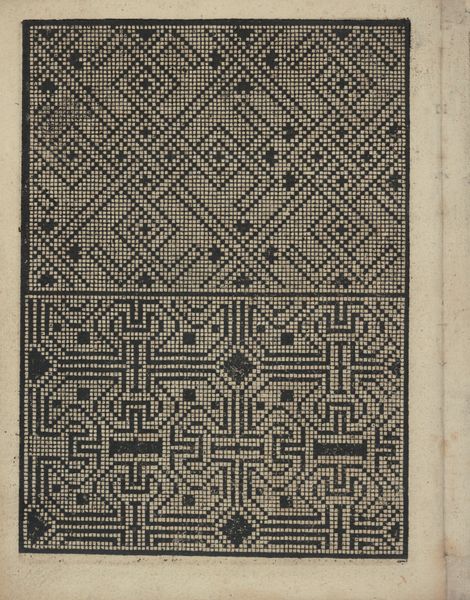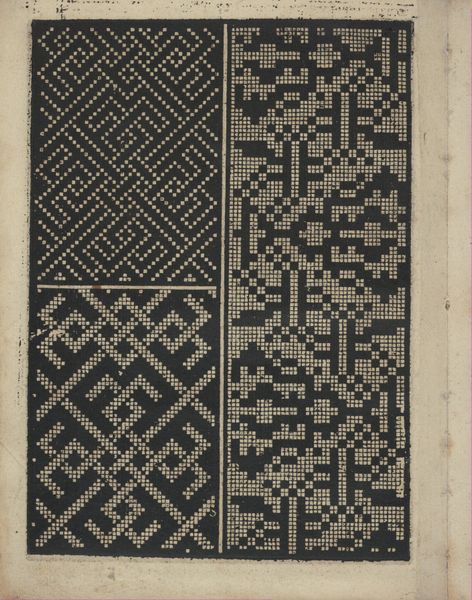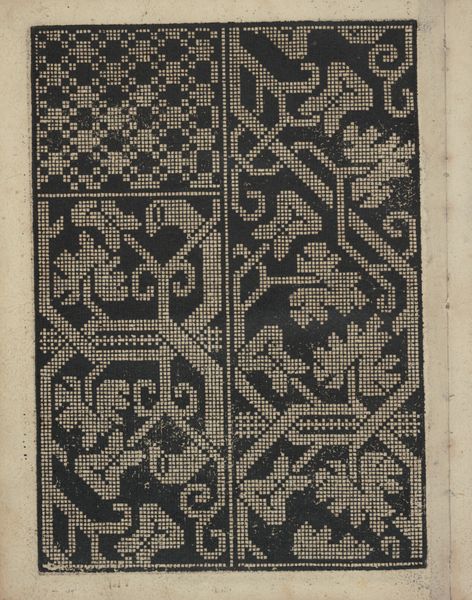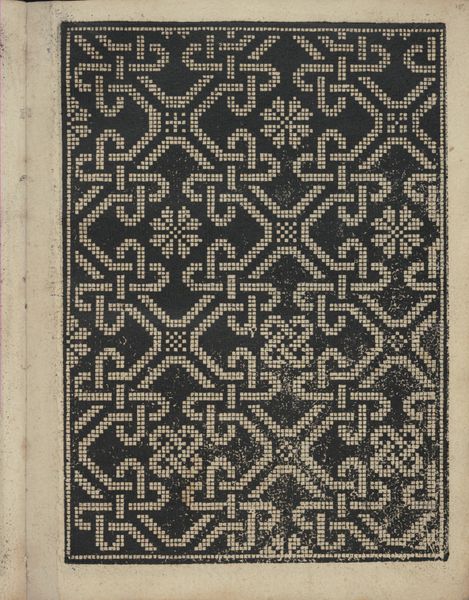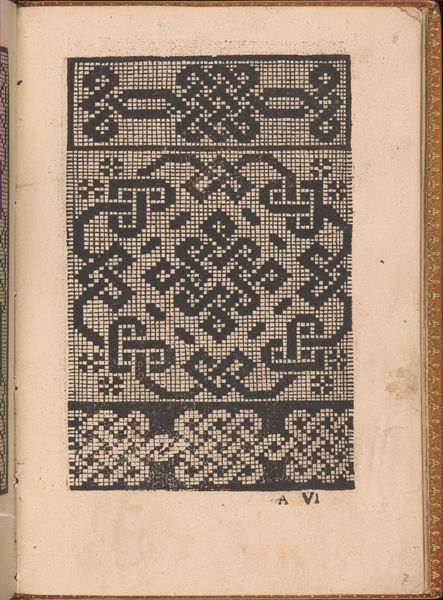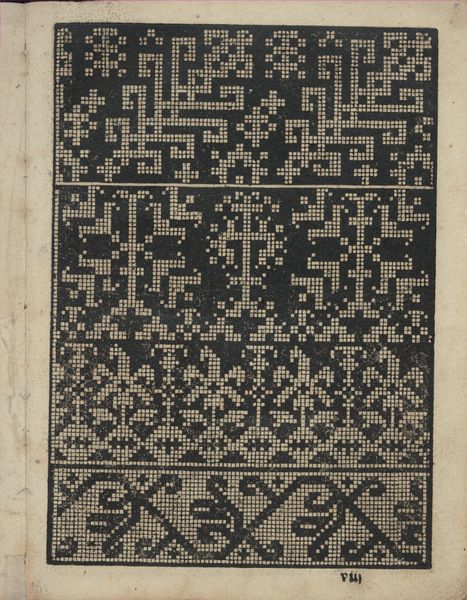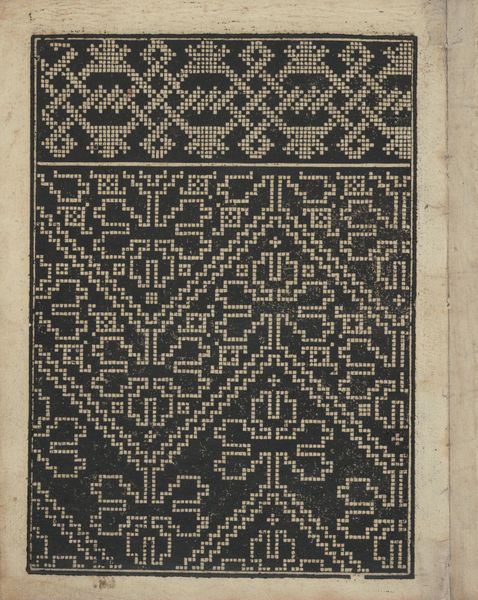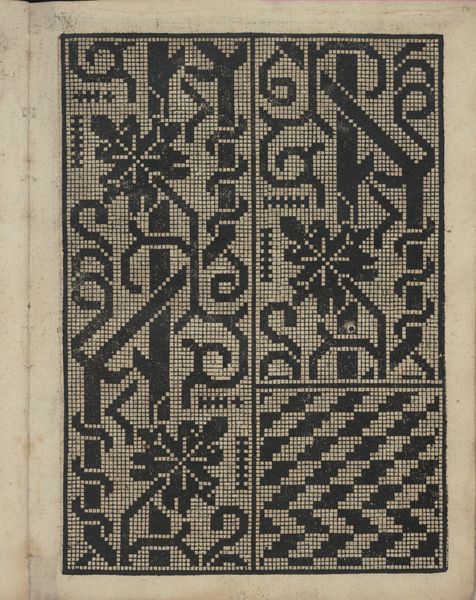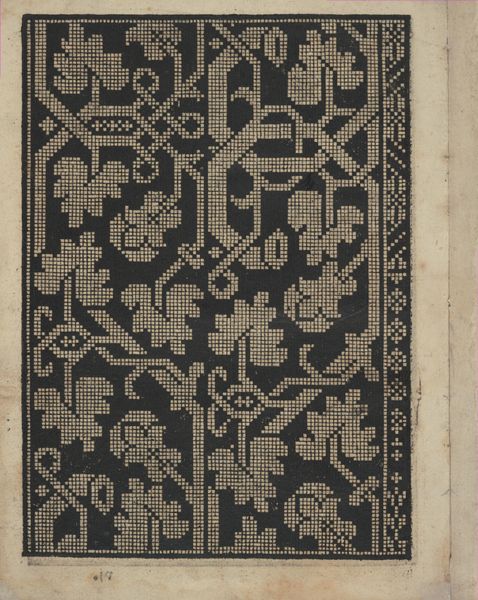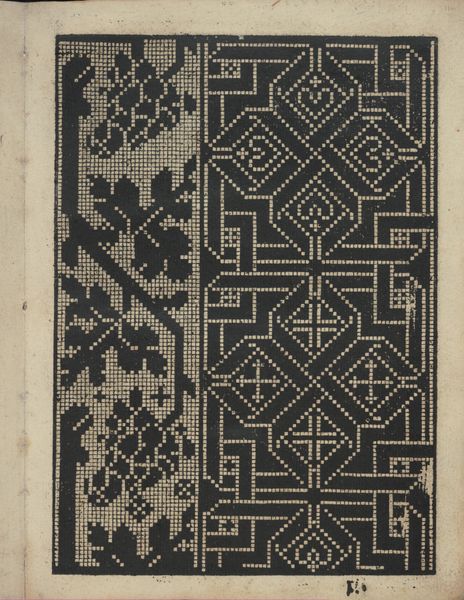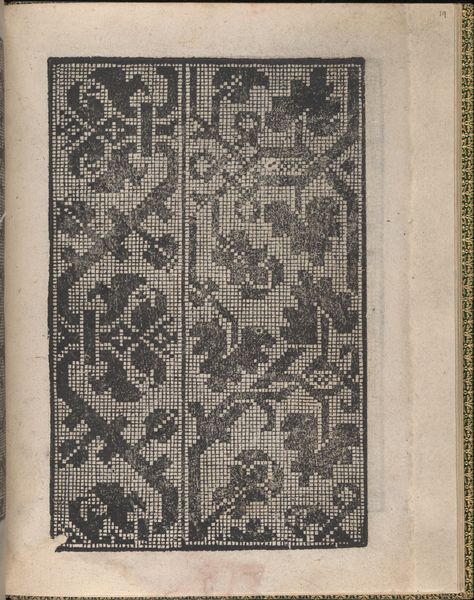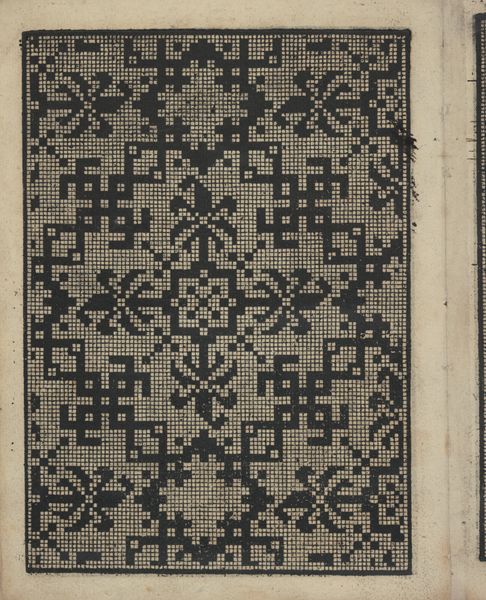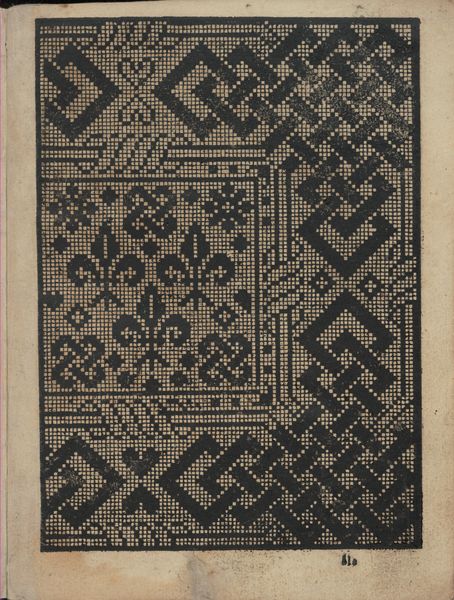
Libbretto nouellamete composto per maestro Domenico da Sera...lauorare di ogni sorte di punti, page 7 (verso) 1532
0:00
0:00
drawing, print, textile, paper
#
drawing
# print
#
book
#
pattern
#
textile
#
paper texture
#
paper
#
11_renaissance
#
geometric
Dimensions: Overall: 8 1/16 x 6 5/16 in. (20.5 x 16 cm)
Copyright: Public Domain
Editor: We’re looking at a page from “Libbretto nouellamete composto per maestro Domenico da Sera…lauorare di ogni sorte di punti,” created by Domenico da Sera in 1532. It's a print on paper, showing a complex geometric pattern. The density of the pattern and the repetition are fascinating, but where does this design fit within its historical context? Curator: That’s a great question. These pattern books served a crucial social function in the 16th century. Think of them as early examples of accessible design—disseminating knowledge about fashionable textile patterns. Who had access to such designs? And what did that signify about their social standing? Editor: So, it was a tool for the upwardly mobile? A way to participate in elite visual culture through textiles and needlework? Curator: Exactly. The printing press democratized these intricate designs to a degree, allowing more people to emulate the fashions of the wealthy. Consider how powerful institutions like the church or royal courts used clothing to project authority. This book lets other folks into that game, though obviously on a smaller scale. Were sumptuary laws at play in this period, that would regulate textile choices by class? Editor: Possibly, which would add another layer of tension – design as a means of both aspiration and potential transgression. The grid-like structure too… it makes me think of the limitations of the technology for distributing images, which must have influenced the design choices. Curator: Precisely. The grid isn’t just decorative; it is intrinsically linked to the technologies of reproduction and, in turn, dissemination, influencing how patterns are perceived and replicated across different social spheres. Do you see the power of mass reproduction to not only standardize but also perhaps create unique interpretations and challenges? Editor: I do now. It's not just about the pattern itself, but about the social dynamics it enables and reflects. The pattern books provided visual syntax for broader statements on social class, power, and identity. Curator: Precisely. Now consider the implications in modern-day fashion or digital designs...
Comments
No comments
Be the first to comment and join the conversation on the ultimate creative platform.
